In 2019, an e-payment system in Singapore released an advertisement portraying Chinese Singaporean actor, Dennis Chew, as an Indian man and Malay woman. This incident sparked immense outrage and discussion about brown-face and racism in Singapore. Photo taken from New Naratif.
Regardless Of Race
Claire Ng Min uncovers the history of racism and xenophobia in Singapore. She launches a discussion on the resurfacing cracks in racial harmony post-pandemic, and on the future of racism in the state built on justice and equality.
In 2019, an e-payment system in Singapore released an advertisement portraying Chinese Singaporean actor, Dennis Chew, as an Indian man and Malay woman. This incident sparked immense outrage and discussion about brownface and racism in Singapore. Photo taken from New Naratif.
BY
Claire Ng Min
Perspectives Section Editor
Hype Issue #54
Published on
May 4 , 2022
Before I launch into this article, I would like to preface by stating that I understand I am writing this article in the position of a privileged Chinese, the majority race in Singapore. There will be nuances and instances I miss because this is such an important and extensive topic, and I apologise deeply for that. I am extremely willing to learn and be corrected. Additionally, I would appreciate any further insight.
It is common knowledge that Singapore’s unique selling point is its wide range of cuisines and fusion food ranging from various countries, backgrounds and cultures. The terms ‘multiracial’ and ‘multicultural’ are synonymous in describing the nation’s cuisines and inhabitants.
However, behind the multi-national delicacies spread peacefully on the dining table, is the reality that Singapore’s racial harmony was formed by rife racial tensions that were bandaged up by racial equality. Now, in the post-pandemic era, cracks in our homogenous society are even more obvious, having resurfaced even before Covid-19. For more context, let us first dive into the history behind the concept of race in Singapore.
History of Race in Singapore
Since British colonial times, Singapore’s 100-year-old Chinese-Malay-Indian-Others (CMIO) ethnic classification model has been the dominant organising framework of race used to govern certain policies over a variety of issues such as political participation, public housing and education.
Fast forwarding to the tumultuous 60s, specifically between the years of 1963 to 1965, Singapore was famously part of the Federation of Malaysia – during which the infamous 1964 racial riots occurred. These communal riots between the Malay and Chinese communities inspired the formation of Racial Harmony Day in 1997, where students are taught to reflect and celebrate Singapore’s success as a harmonious society built on cultural diversity.
The Issue with Race in Singapore’s Education System
No one is born innately harbouring racial awareness until it is taught to them. This is where the fault potentially lies in Singapore’s education system.
Outside the specialised curriculum offering social studies and mother tongue languages which hopes to one day promote racial blindness in Singapore’s future generations, there are instances where the nation’s education system perpetuates racial prejudices.
An example can be found in the article Racialised Education in Singapore, where researchers found that since the start of the 1980s, primary school English textbooks were “systematically designed in a way that they evoke high levels of racial consciousness, and at their worst have displayed a pro-Chinese bias that has deprived non-Chinese children of inspiring role models”.
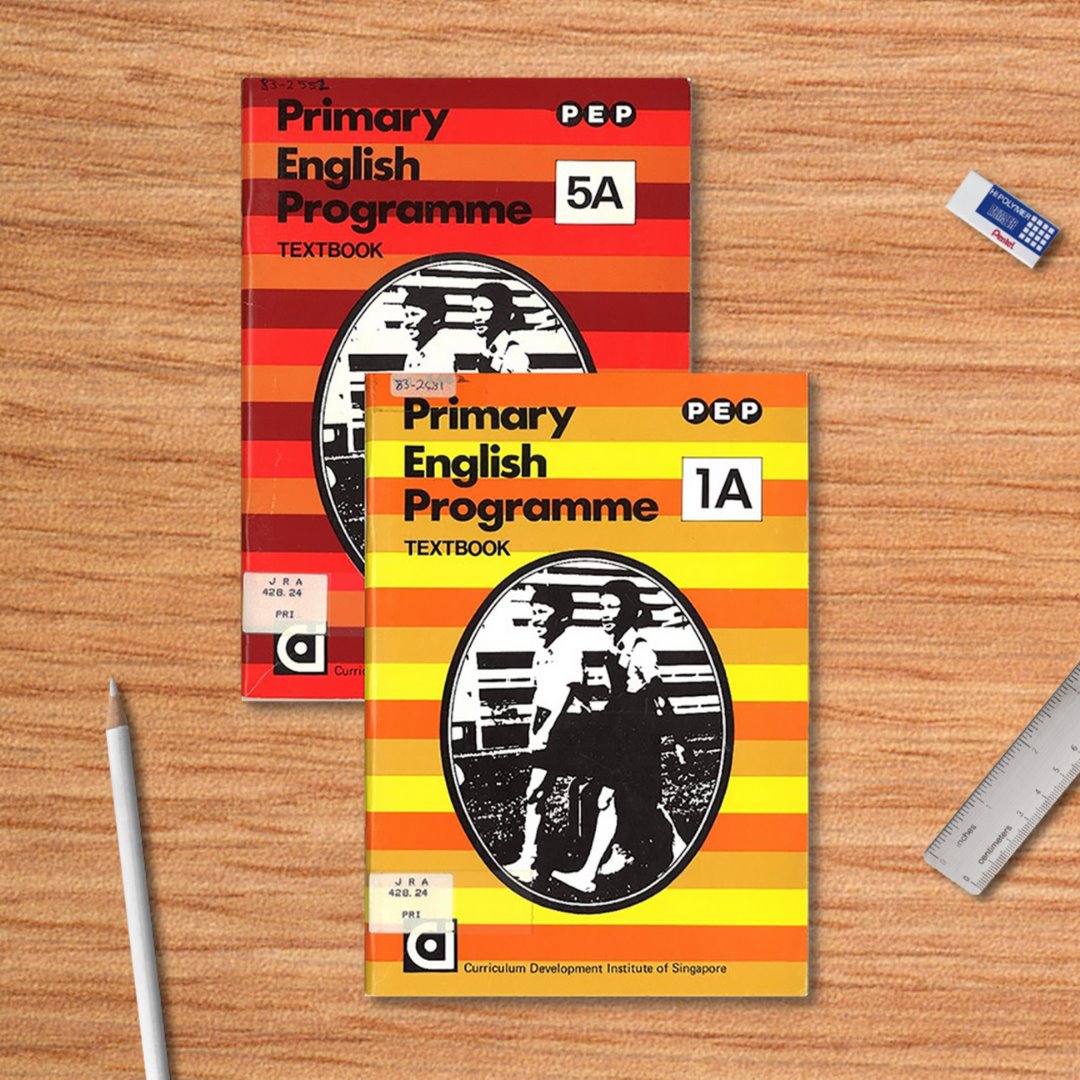
The primary school English textbook “Primary English Programme” was developed under the Ministry of Education’s Curriculum Development Institute of Singapore from the 1980s to the 1990s. Photo taken from National Library Singapore on Facebook.
The Special Assistance Plan schools is another example of how some features of our education system promote self-segregation of Chinese students from students of other races. Chinese students under this scheme spend up to 10 years racially isolated, which could potentially lead to problematic racial biases and an elitist mentality.
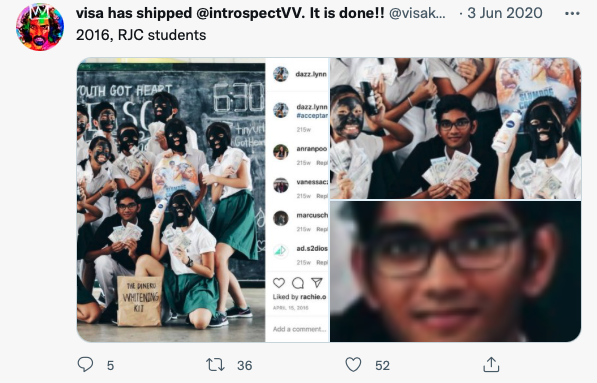
A 2016 image of 10 students in Raffles Institution doing blackface and holding props like whitening lotion, deodorant and fake cash started circulating on social media in June 2020. Screenshot from Twitter.
This is sadly evident in the bullying case of a primary five Malay girl in Mee Toh School, a predominantly Chinese-Buddhist school.
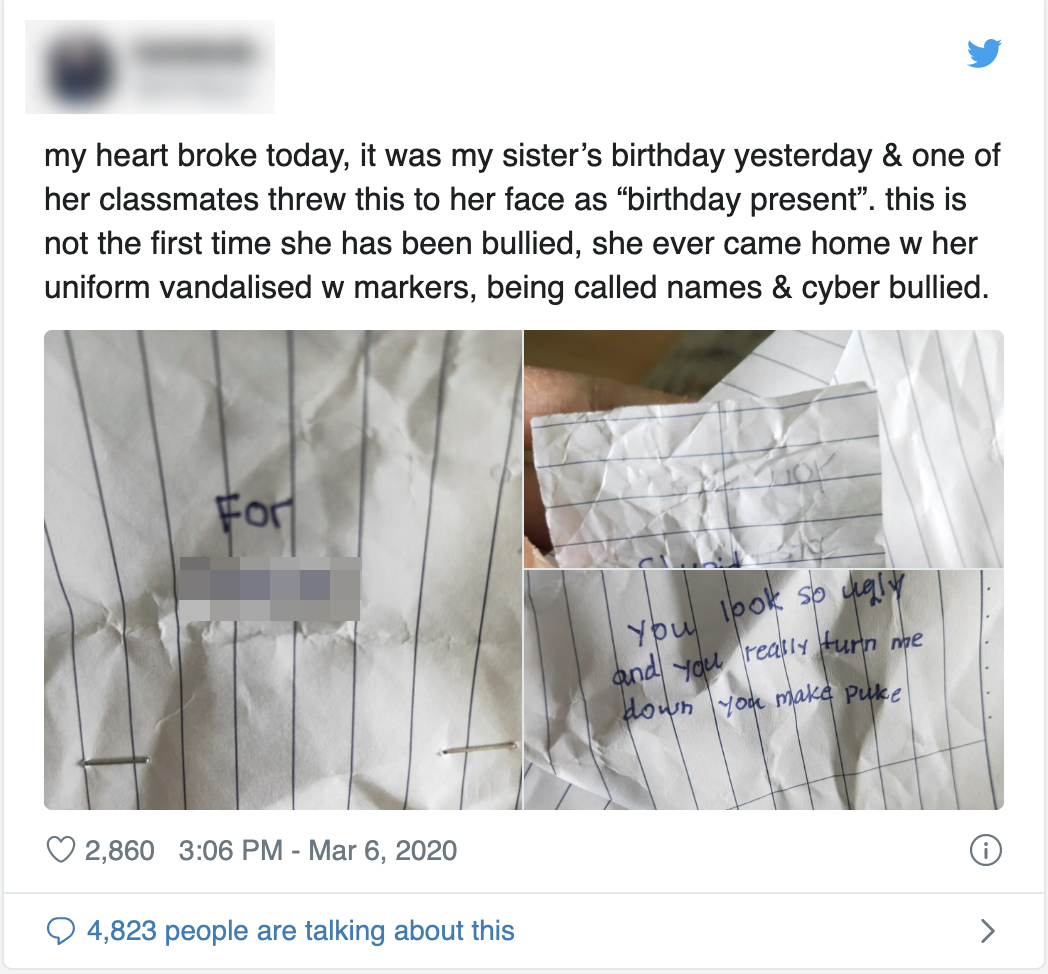
The post was made by the victim’s older sister who revealed how the victim suffered from racist remarks for years as one of the few Malay students in Mee Toh School. Photo taken from Mothership.
While the CMIO model looks good on paper, there are many other instances in which national policies that use race as a key category in defining, dividing, and governing the population have failed Singapore.
Racism During the Pandemic
Chinese Privilege
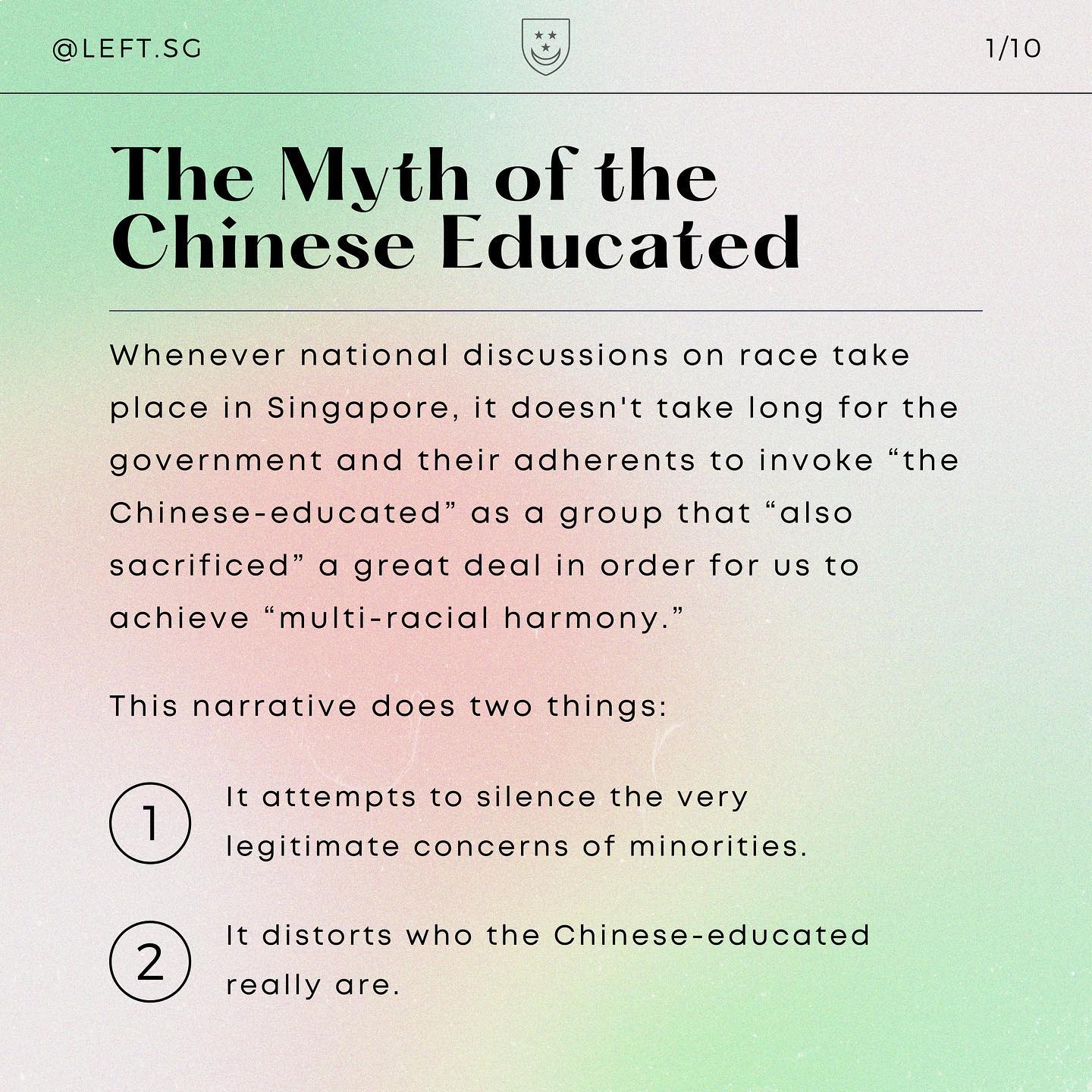
An informative Instagram post thread highlights how Chinese privilege was built politically in Singapore. Photo taken from @Ieft.sg on Instagram.
On Jun 9, 2021, an editorial was released by Lianhe ZaoBao, a Singaporean-Chinese newspaper, and titled ‘Broadening Public Space, Promoting Racial Harmony.’ The editorial was created in response to the public outrage over racial incidents involving a former Ngee Ann Polytechnic senior lecturer making racist remarks towards an inter-ethnic couple and the attack of a 55-year-old Indian woman.
In summary, the editorial blames the racist incidents on uncertainties caused by the pandemic, sensationalism of news on social media, and the importation of ‘foreign ideas’ such as Critical Race Theory (CRT). They used these reasons as arguments to defend their positioning that these incidents are not common in Singapore and that the nation is racially harmonious; invalidating the experiences of micro and macro-aggressions faced by the country’s minority races.
On 13 June 2021, a group of scholars wrote an open letter in response to Lianhe ZaoBao’s editorial expressing their dismay at how the article did not accurately reflect how racism exists; not “just in individual psychology, but also in our social structures”.
In their open letter, they explained how the editorial misrepresented CRT as the promotion of “hatred of white people” in the United States, the majority race of the country. They showed how by extension, CRT can be used to describe the privilege experienced by Chinese people in Singapore who make up for 76% of the nation’s population.
As Associate Professor Chong Ja Ian, Associate Professor in the Department of Political Science at National University Singapore, explained in his article: “Simply put, CRT is an intellectual movement that developed from the US, based largely on the experiences of African Americans. It explores how the discrimination and unfair treatment caused by racism embedded in legal, social, and political structures, extends, consolidates, maintains, and even deepens the disadvantages minorities face.”
“The existence of these structures allows white Americans to enjoy greater privilege compared to other ethnic groups.”
In his article, he expressed his thoughts on the Lianhe Zaobao episode, relating CRT to Singapore’s current state of racism.
He wrote: “Many Singaporeans use the claim that ‘discrimination exists in every society’ to avoid sensitive subjects or gloss over ugly realities or believe that there was some pristine race policy in the past that requires no reflection or improvement.
“This lets down our society, damages long-term development, and displays a certain privilege. People able to make such claims have a choice to avoid the consequences of these ‘sensitivities’, and tend not to have questions of their ethnicity affect their work, living conditions, or cause them to be otherwise marginalised.”
The Evolution of Discourse Surrounding Racism
In 2021, Law and Home Affairs Minister, K Shanmugam, said that the police reports regarding racist or religion-related incidents made to the authorities rose from 18 in 2018, to 31 in 2019 and 60 in 2020; almost doubling with every year that passes.

The number of cases investigated, warned, charged and convicted under Sections 298 and 298A of the Penal Code from 2011 to 2020. Screenshot from Ministry of Home Affairs.
Mr Xie Quang Long, 22, a Vietnamese-Singaporean found these statistics to be frightening.
He said: “I doubt that the increase in cases is due to people being more racist nowadays. Instead, I feel like it is because racist people feel more empowered to act out. In addition, the numbers may have been lower in the past because people were less willing to call out these reprehensible acts.”
In a survey conducted by TODAY, 64 per cent of the Singaporean youths interviewed felt that the level of racism had increased since the pandemic began, with nine out of 10 believing that social media made racist aggressions much more prominent.
Like other youths in Singapore, Mr Long believes the portrayal of news coverage from Covid-19 cases has contributed to the increasing mistrust amongst residents.
He said: “You can see this during the initial outbreak, where Chinese people were discriminated against in the USA. Similarly, when the Delta variant was prominent, the same phenomenon took place in Singapore, towards the Indian community.”
“However, I am not sure the blame could be placed on the media entirely. Covid-19 just revealed the ugly Singaporean truth that we have refused to admit for the longest time, which is that racism is still well and alive in our communities.”
“However, I am not sure the blame could be placed on the media entirely. Covid-19 just revealed the ugly Singaporean truth that we have refused to admit for the longest time, which is that racism is still well and alive in our communities.”
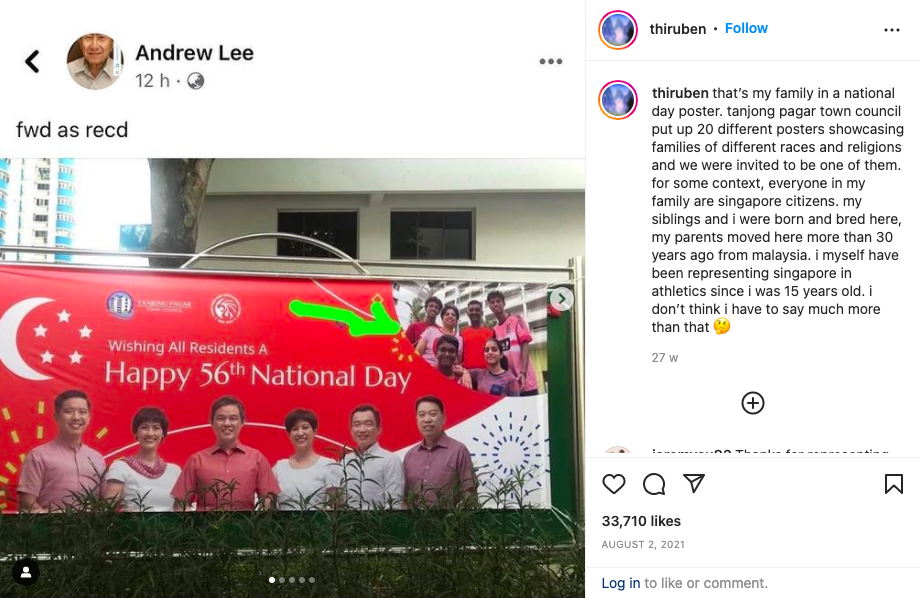
National athlete Thiruben S/O Thana Rajan identified his family from the 2021 National Day banner featured in Tanjong Pager GRC that bore the brunt of racist and xenophobic remarks implying they were not Singaporean (they are) and querying why an Indian family was featured. Screenshot from @thiruben on Instagram.
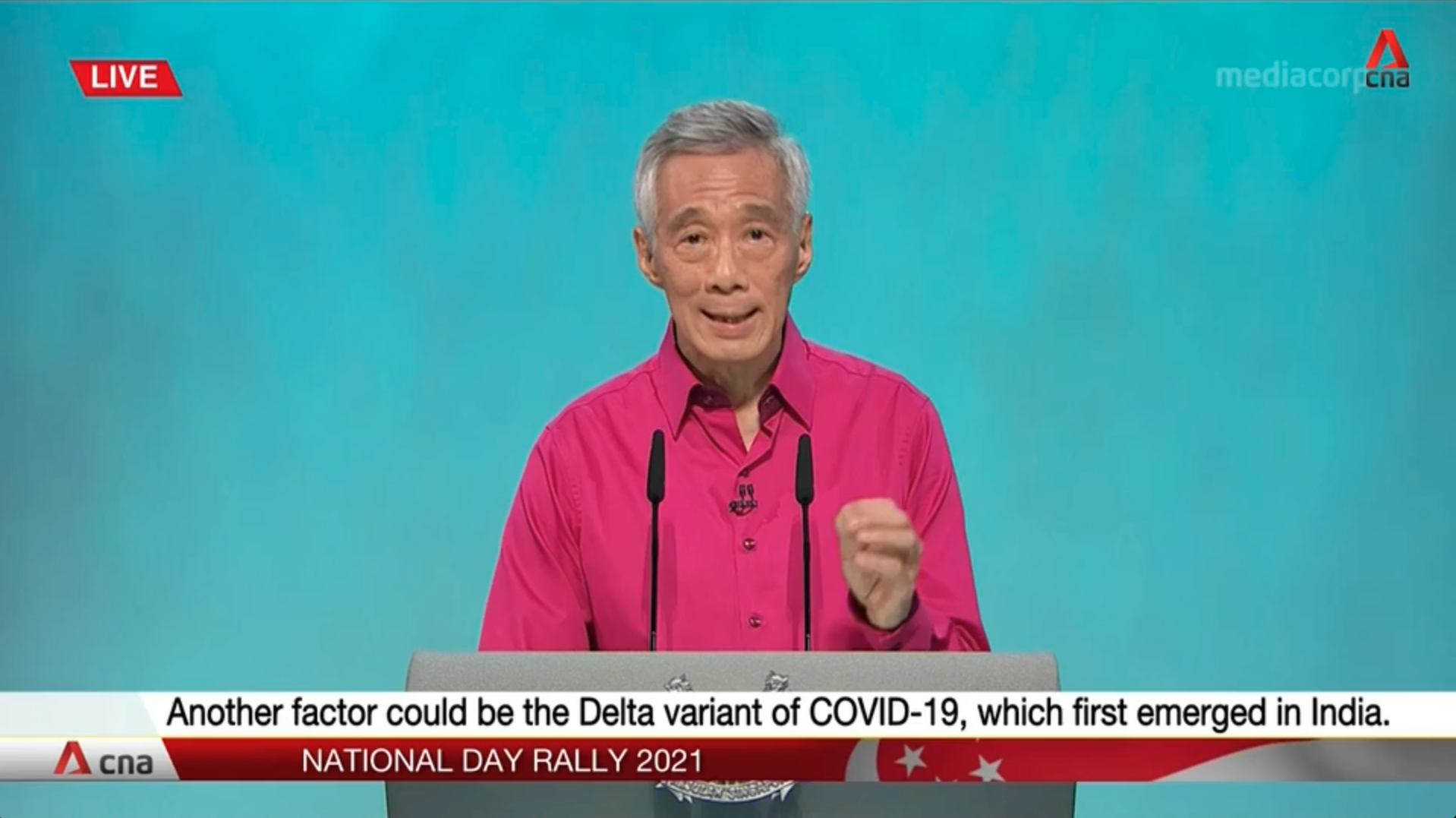
Prime Minister Lee Hisen Loong expressed disdain over racist incidents towards the Indian community in Singapore at the National Day Rally 2021. Screenshot from Channel News Asia.
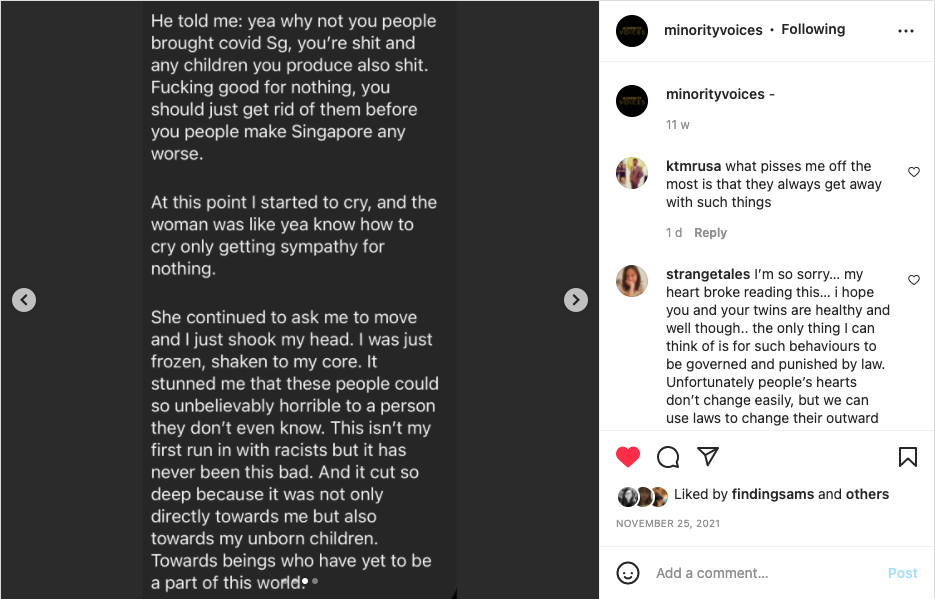
An Indian mother who is six months pregnant with twins anonymously recounted an appalling experience of violent and blatant racism from a Chinese couple who called her unborn children ‘sh*t’; after she confronted them for loudly calling her a ‘leech’ when she patiently waited for them to move from the orange section in the supermarket. Screenshot from @minorityvoices on Instagram.
Seeing the racism Indians in Singapore faced after the emergence of the Delta variant made Mr Long feel very disappointed and angry at our community.
“These were the same people who were criticising Westerners for blaming the initial outbreak on the Chinese. However, just a few years later, they were doing the same thing towards our own minorities.”
Racist Microaggressions
In Associate Professor Chong’s article, he expressed that although Singapore did not experience extreme acts of racial violence or have a history of slavery, casual racism, discrimination, prejudice and injustice still exist so palpably in the nation.
Associate Professor Chong wrote: “We see potential landlords refusing rentals because of skin colour; prospective employers turning people away due to race or religion; people telling children that minorities will kidnap them; people mocked in school and at workplaces for how they look; harassment of interracial couples. These are examples of the casual racism and discrimination that ethnic minorities face daily in Singapore.”
Ironically, he described these experiences to mirror the injustice ethnic Chinese in Singapore received under British colonial rule.
Athirah Othman, 30, a Malay woman, spoke up about her recent experiences with racism. When she and her partner were looking for rental options through agents and landlords, they were constantly rejected with reasons like “landlord prefer Chinese”.
She said: “When I choose to not mention my race, I don’t get a reply or they just pretend to be busy and reply less until they find a tenant of their preferred race. It gets really frustrating because it has nothing to do with me being a good tenant.”
When discussing the possibility of having kids in the future, Athirah received casual racist remarks such as “I hope your kids are not dark like your husband”.
Infuriated, she said: “It is insulting really. We are both Malays despite having different skin tones and hearing that really sounds like ‘oh your unborn baby will be cuter if their skin colour is lighter’.”
In response to the resurfaced racism and xenophobia from the pandemic, Athirah believes these incidents have triggered Singaporeans to “really think about all the micro-aggressions we have blinded ourselves to because we are so used to it.”
Encouraged by the wave of increased conversations and awareness about the types of racism and xenophobia in Singapore, she added: “Seeing a variety representation of real, non-stereotypical, people of minority openly sharing their racist encounters and being validated shows that we are ready for more than just conversations; it feels empowering because we are challenging and breaking norms.”
“Seeing a variety representation of real, non-stereotypical, people of minority openly sharing their racist encounters and being validated shows that we are ready for more than just conversations; it feels empowering because we are challenging and breaking norms.”
“As a part of the minority, this doesn’t solve anything or heal the trauma I have experienced; but I now feel included. I feel like this makes it even harder for casual racism to even surface because it introduces a wave of a new normal with newly-established expectations.”
Acknowledging the influence social media has played with boosting conversations and awareness around race, Neha, 21, believes that “with social media comes the idea of ‘wokeness’, where users may actually feel a certain level of pressure to prove to everyone else that they are a social media activist.”
She warns social media users not to engage in performative activism, otherwise known as ‘slacktivism’, “just to be woke”.
She said: “I’m not saying that a 100 per cent of the community is doing it just to be ‘woke’, but I think it’s undeniable that a certain percentage of them might be sharing and reposting things just because everyone is doing so as well.”
Neha added: “We don’t really know how genuine some users’ sympathy is and it is really hard to tell, just because of the nature of social media activism.”
Allyship: How Can We Do More?
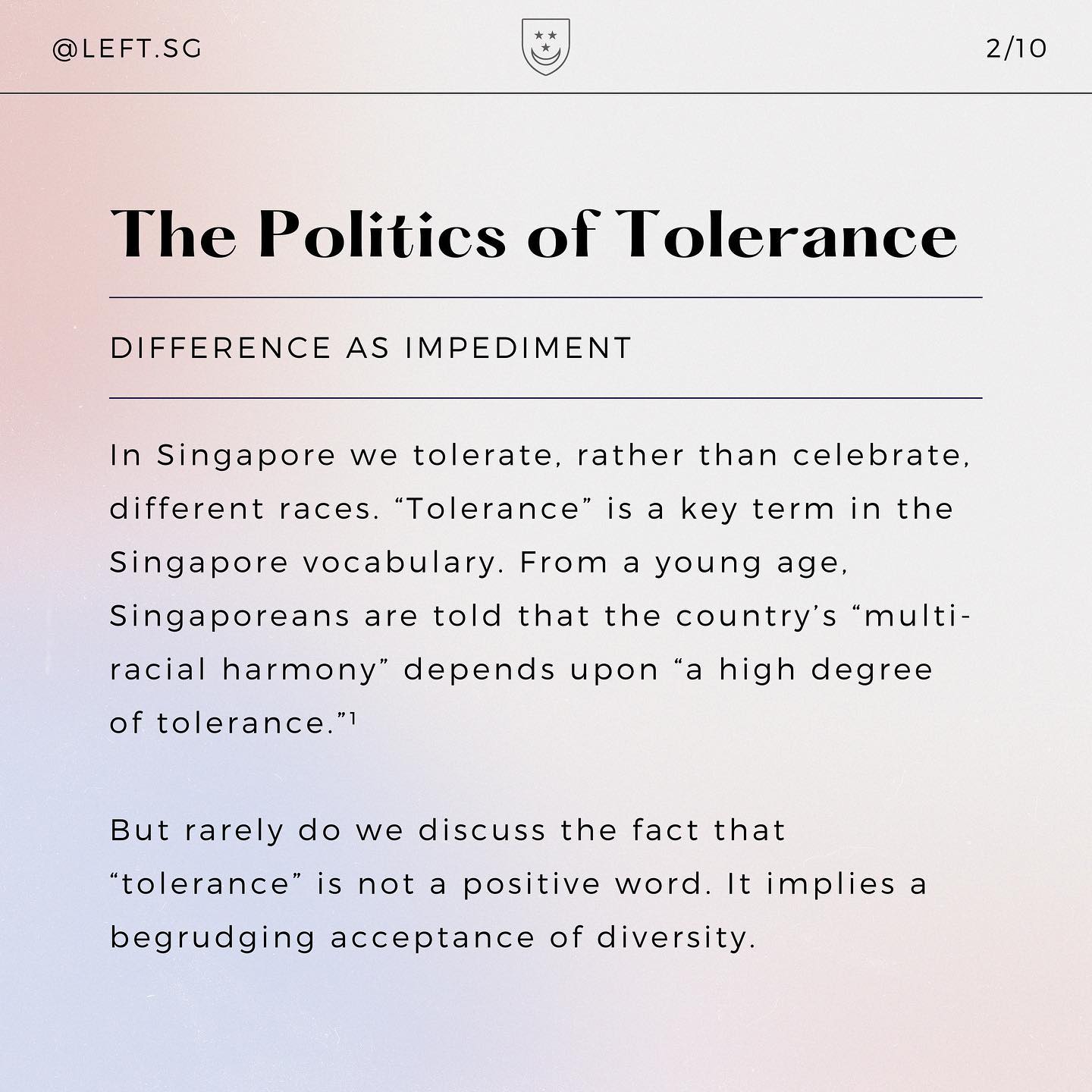
An informative Instagram post thread highlights how racial tolerance in Singapore occurred from a place of tolerating race and preserving harmony. Photo taken from @left.sg on Instagram.
In an article with Channel News Asia, Associate Professor Chong said: “It is important, in my opinion, to identify these biases and stereotypes and understand where they come from and how they link to the various fears, anxieties, suspicions, frustrations that people have.
“Some of this will look ugly, but if we can start addressing them bit by bit, with understanding, there is a good chance we can move forward.”
Neha agreed with acknowledging the faults in our judgement as the first step.
She said: “Change has to start with recognising the problem. I’m just worried that the resurfacing of racism and xenophobia, and the increased number of reports and videos might influence people into thinking that this is somehow okay, which will cause us to go backwards.”
Htet Htet Nay Aung, 21, a Burmese student in Singapore, has one simple piece of advice to give: “If you’re asking yourself the question of ‘am I being racist?’, then you most probably are and it might be time for you to check your privilege and mindset.”
“If you’re asking yourself the question of ‘am I being racist?’, then you most probably are and it might be time for you to check your privilege and mindset.”
Echoing Associate Professor Chong’s sentiments, Htet said: “Education is very important. It can come in so many different forms such as educating yourself on the racial issues minorities face even when you are not part of that community. It can start as small as being aware of racial slurs, understanding why they are offensive, and encouraging your social circles to not say them.”
She added: “Racism and xenophobia are deeply rooted in our society, and it might be impossible to simply get rid of them, even in a few decades. But just putting in the effort to be educated will ensure that this will not be passed on.”
Apart from education, Mr Long believes one also needs to show intolerance to any form of racism and xenophobia.
He said: “It starts with calling out these racist acts. To quote Desmond Tutu, ‘If you are neutral in situations of injustice, you have chosen the side of the oppressor.’ Silence benefits no one but yourself, and the oppressors.”
Despite this, Mr Long urges everyone to practice tact and a certain kindness when dealing with racist individuals.
Addressing the practice of cancel culture on social media, Mr Long said: “There must be a sense of forgiveness, which the current cancel culture seems to lack. People are not allowed to grow from their past mistakes, and I think this is a big hurdle in getting over racism and xenophobia.
“If these racist individuals are not given a chance to turn over a new leaf, they will retreat to their respective racist communities, who will welcome them with open arms,” he said.
The Future of Racism In Singapore
It is now without a doubt that racism is deeply rooted in Singapore’s society. However, with all that is said and done, Mr Long and Htet are hopeful that racism is an issue that Singapore may recover from with time.
To get there, one of Htet’s pieces of advice includes constantly holding conversations about racism and xenophobia, and not getting deterred or discouraged no matter how uncomfortable these conversations are.
She concluded: “It is the only way to get the people of Singapore to step away from this cycle of casual and closeted racism.”
Mr Long said: “It will take time for people to unlearn the racial stereotypes that have been inculcated since birth. From the ‘apu neh neh’ (a racist term for an Indian man) stories parents scare their toddlers with, to the dated racist jokes in our mainstream media.
“We must start by recognising and acknowledging our own shortcomings on the topic of race, without being defensive about it, because you know you can and will do better in the future.”
However, it must be expected that there will be great difficulty and resistance to such a change.
Mr Long added: “It is hard because everyone thinks that they are the hero in their own story. Hence, they’re less likely to own up to their own faults. This is especially true in Singapore, where people are always trying to ‘save face’.
“In addition, everyone is only looking out for their own interests, and not the interests of the community. If the problem does not affect them, they do not care.”
As such, Athirah and Neha agree that a post-racial Singapore is a touch over-idealistic.
Athirah said: “I don’t think we will ever recover from racism, we cannot truly stop people if they don’t want to. But I am optimistic that we will continue to speak up and have conversations about it and hopefully raise awareness on this and make it harder for people to display racism so casually.”
Neha added: “It’s a problem that we can try to decrease, but there is no way to flip a switch and turn racism off completely. It really depends on how our generation learns from the incidents that are unfolding in front of our eyes now, and how we educate our future children about acceptance and respect of different cultures.”
As sicknesses that have plagued Singapore since its birth, racism and xenophobia, like COVID-19 and its variants, are rampant in the country with no sight of a full recovery in the near future.
However, let us as a nation of one united people, take the available actionable measures and steps we can to achieve the promise of the third line in our national pledge, “regardless of race, language or religion”. With time, it may not heal all wounds but it may finally let the light of equality shine on Singapore’s shores.

Very nice post. I just stumbled upon your blog and wanted to say that I’ve really enjoyed browsing your blog posts. In any case I’ll be subscribing to your feed and I hope you write again soon!
Thank you for your sharing. I am worried that I lack creative ideas. It is your article that makes me full of hope. Thank you. But, I have a question, can you help me? https://www.binance.com/pt-PT/register?ref=V2H9AFPY
relaxing music
Thanks for sharing. I read many of your blog posts, cool, your blog is very good. https://www.binance.com/pt-BR/register?ref=53551167
Thanks for sharing. I read many of your blog posts, cool, your blog is very good. https://www.binance.info/zh-TC/join?ref=V2H9AFPY
I don’t think the title of your article matches the content lol. Just kidding, mainly because I had some doubts after reading the article. https://www.binance.info/ka-GE/join?ref=V3MG69RO
… [Trackback]
[…] Here you will find 75875 additional Information to that Topic: hypesingapore.com/index.php/2022/05/04/regardless-of-race/ […]
Can you be more specific about the content of your article? After reading it, I still have some doubts. Hope you can help me.
Your point of view caught my eye and was very interesting. Thanks. I have a question for you.
Can you be more specific about the content of your article? After reading it, I still have some doubts. Hope you can help me.